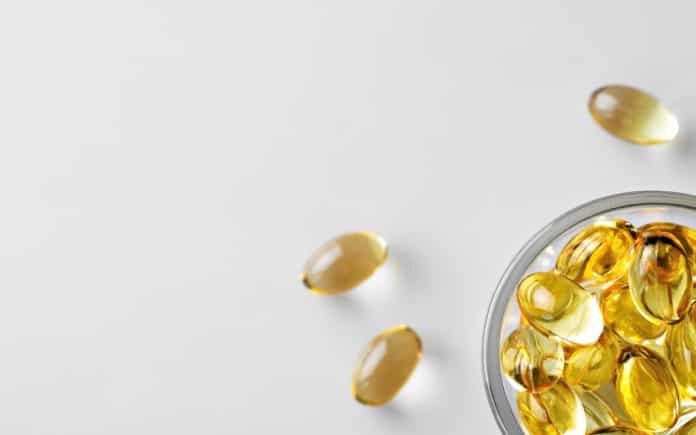A recent Australian study showed that a lack of vitamin D, also called “the sunshine vitamin,” is associated with an earlier death. So what percentage of people are deficient in this vital nutrient? And which foods contain it?
The researchers found that those with greater vitamin D deficiencies had a greater risk of death.
Vitamin D is not only good for bone health, but it helps maintain strong muscles as well.
Vitamin D is an essential nutrient for anyone, as it helps maintain good health and strengthens bones and muscles.
“Though severe vitamin D deficiency is rare in Australia, it can still affect certain demographics such as the elderly and those with pre-existing health conditions,” said study first author Josh Sutherland.
The level of vitamin D is measured by the levels of 25-hydroxyvitamin D, which can be found expressed in either Nanomol/L (nmol/L), ng/mL measurements.
normal vitamin d levels
Vitamin D deficiency
According to the National Institutes of Health Office of Dietary Supplements, levels lower than 30 nmol/L (12 ng/ml) are considered deficient.
Possible vitamin D deficiency
The acceptable range for Vitamin D levels is between 30 and 50 nmol/L.
Normal levels of vitamin D
The concentration of 50-125 nmol/L (20-50 ng/ml)
High levels of vitamin D
Above 125 nmol/L (50 ng/ml)
What causes vitamin D deficiency
.There are several reasons why someone might not get enough vitamin D, including:
- – Not getting enough sun exposure
- – Inefficient production of vitamin D within the skin
- – A deficiency of vitamin D in food.
- – The breakdown of vitamin D in the body by other drugs
- – The presence of genetic problems that prevent the action of the vitamin in the body.
Types of Vitamin D
Did you know that there are two types of vitamin D?
- Vitamin D2
- Vitamin D3
There are two types of vitamin D that the liver processes and converts into calcidol. To test whether someone has a normal level of vitamin D, doctors measure the concentration of calcidol in their blood.
Symptoms of Vitamin D deficiency
Vitamin D deficiency symptoms differ between children and adults
Symptoms of vitamin D deficiency in adults
- .-Rapid fatigue when doing activities
- – Feeling pain in bones or muscles
- – Pain in lower back or feet
- – Frequent bone fractures
- – Muscle weakness -Mood changes, feeling down or depressed
Symptoms of Vitamin D deficiency in children
Common symptoms of vitamin D deficiency in children include
- ;Growth retardation is a condition that causes delayed physical development in children.
- -Delayed closure of the soft head spacer (fontanelle) in infants.
- -Breathing difficulty.
- -Pain in the bones and muscles.
- -Skeletal abnormalities (bow legs or cross-knee).
- -‘Swollen joints’.
Comparison between Vitamin D2 and Vitamin D3
Animals produce Vitamin D2, while plants produce Vitamin D3. However, Vitamin D3 is more effective in raising the level of this vitamin in the body.
Sunshine and Vitamin D
To get enough sunlight, try to be exposed to the sun for 10 to 15 minutes 3 times a week, from 9 am to 2 pm. Expose about a third of your body or only your face and arms when doing outdoor activities. Use sunscreen, hats and sunglasses. Regular use of protective creams does not inhibit the production of vitamin D within the skin but is recommended for infants over the age 6 months Not only should small children be exposed to indirect sunlight, but older children as well. Protective creams and clothing should be used for both age groups.
Is indoor exposure to sunlight through a window good for vitamin D levels?
No, exposure to the sun will not be beneficial if you stay indoors near windows.
Vitamin D food
There are multiple food sources of vitamin D, including
1- fish products
2- egg yolk
3- Nuts (but not in large quantities)
4- Mushrooms (mushrooms)
5- Fortified foods
includes
- .Breakfast Cereal
- Milk, yoghurt, cheese, butter, etc.
- Ghee.
- cooking oils.
- Orange juic
Prevention of vitamin D deficiency
A lack of vitamin D can be unhealthy and dangerous, but by taking preventative measures such as spending time in the sun, eating well, and taking supplements when needed
You can help control your risk.
Vitamin D deficiency treatment
If you have a vitamin D deficiency, there are several supplements you can take to restore your levels. However, it’s important that you follow your doctor’s treatment plan and not self-medicate. You may also need to take calcium supplements along with vitamin D to help strengthen your bones – again, listen to your physician.



